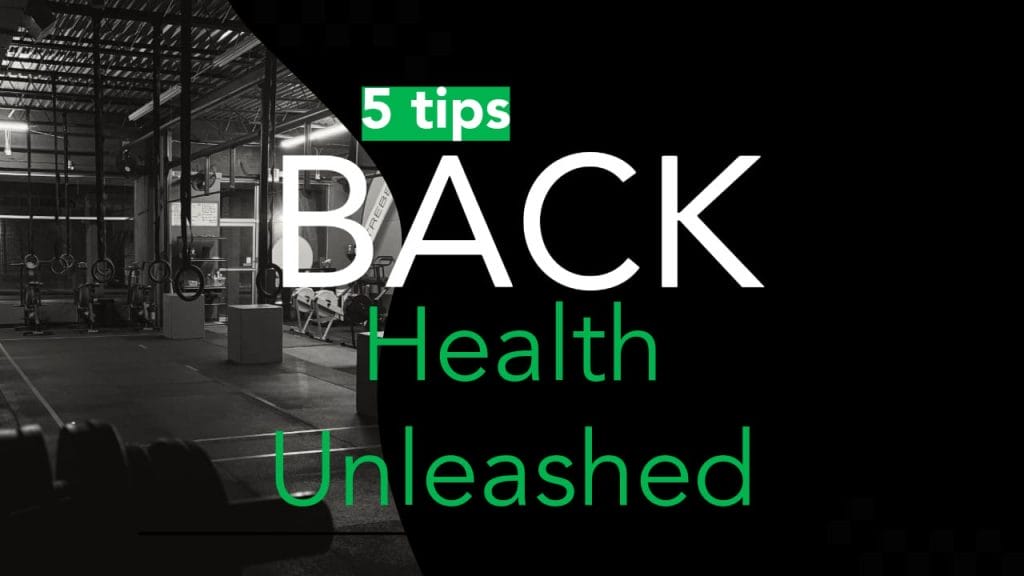Back health should be a daily practice.
A strong and healthy back is often synonymous with the functionality and flexibility of the hips and lower body. Deep squatting, a fundamental movement pattern, stands out as a cornerstone in promoting back health. As we delve into the importance of deep squatting, we’ll explore a series of progressions that not only make this exercise accessible to various fitness levels but also underscore its significance in maintaining a resilient and pain-free spine.
Understanding the Importance of Deep Squatting for Back Health
Deep squatting, a full range of motion exercise where the hips descend below the knees, engages multiple muscle groups simultaneously. This compound movement targets the muscles in the lower back, hips, glutes, and thighs, fostering strength and flexibility. Here’s why incorporating deep squatting into your routine can be a game-changer for back health:
- Hip Mobility and Flexibility: Deep squatting requires a wide range of motion in the hips. Regular practice improves hip flexibility, reducing stiffness and enhancing overall mobility. This is particularly crucial for individuals with sedentary lifestyles, where prolonged sitting can lead to tight hips and contribute to back discomfort.
- Spinal Decompression: Descending into a deep squat helps decompress the spine. The gravitational forces acting on the spine during the squatting motion can counteract the compression experienced in daily activities like sitting or standing for extended periods. This decompression promotes spinal health and alleviates pressure on vertebral discs.
- Core Strength: The deep squat engages the core muscles to stabilize the spine throughout the movement. Strengthening the core is essential for maintaining proper posture and preventing lower back pain. A robust core provides a solid foundation, reducing the risk of injury and promoting spinal integrity.
- Posture Improvement: Deep squatting encourages an upright torso and a neutral spine. Consistent practice helps reinforce good posture habits, translating into better alignment during various activities. Improved posture contributes to decreased strain on the back and a reduced likelihood of developing chronic pain.
- Functional Movement: The deep squat mimics a natural human movement pattern, making it a functional exercise. Enhancing the body’s ability to perform these innate motions supports overall agility and reduces the risk of injury during daily activities.
Progressions for Deep Squatting: Tailoring the Journey to Your Fitness Level
To make deep squatting accessible to individuals at various fitness levels, in addition to implementing our favorite warm-up, a series of progressions can be implemented. These progressions serve as building blocks, allowing individuals to gradually improve their flexibility, strength, and form. Here’s a step-by-step guide through these progressions:
- Assisted Deep Squat to High Box: Begin by using a high box or bench for support. Lower yourself into a squat, allowing the box to provide assistance in maintaining balance. This progression helps in gradually adapting to the depth of a full squat.
- Assisted Deep Squat to Low Box: As confidence and flexibility increase, switch to a lower box. This challenges the range of motion and encourages a deeper squat position. Use the box for support, gradually decreasing reliance as comfort with the movement grows.
- Assisted Deep Squat Using Post: Incorporate a vertical post or sturdy support to assist in the squat. Hold onto the post to guide your descent and ascent, focusing on maintaining proper form. This progression aids in building strength and stability.
- Assisted Deep Squat Against Wall: Stand with your back against a wall, lowering into a squat position. The wall provides support and ensures proper alignment. This progression helps in refining form and developing confidence in the deep squat.
- Deep Squat: Once comfortable with assisted variations, progress to an unassisted deep squat. Focus on maintaining a natural spine curve and proper alignment throughout the movement. Gradually work on increasing depth as flexibility improves.
- Deep Squat Chest/Arms off Legs: Elevate the challenge by keeping the chest and arms lifted while in a deep squat position. This variation engages the core more intensely, promoting greater strength and stability.
- Deep Squat Feet Closer: Experiment with a narrower stance in the deep squat. This variation targets different muscle groups and emphasizes inner thigh engagement, contributing to overall leg strength.
- Deep Squat Heels Together: Bringing the heels together in a deep squat adds a unique challenge. This variation enhances balance, activates the inner thighs, and further refines the control of the squatting movement.
Conclusion: Prioritizing Back Health Through Deep Squatting
In the journey to a resilient and pain-free back, deep squatting emerges as a pivotal ally. The dynamic engagement of multiple muscle groups, coupled with the progressive nature of the suggested variations, ensures that individuals of varying fitness levels can benefit from this fundamental movement.
Integrating deep squatting into your fitness routine not only contributes to improved back health but also enhances overall functional movement, flexibility, and core strength. As with any exercise program, it’s essential to start at a comfortable progression level and gradually advance as your body adapts.
So, whether you’re using a high box for support or confidently executing a deep squat with heels together, each progression is a step toward a healthier, more resilient back. Embrace the journey, prioritize your back health, and let the transformative power of deep squatting unfold in your fitness routine.

